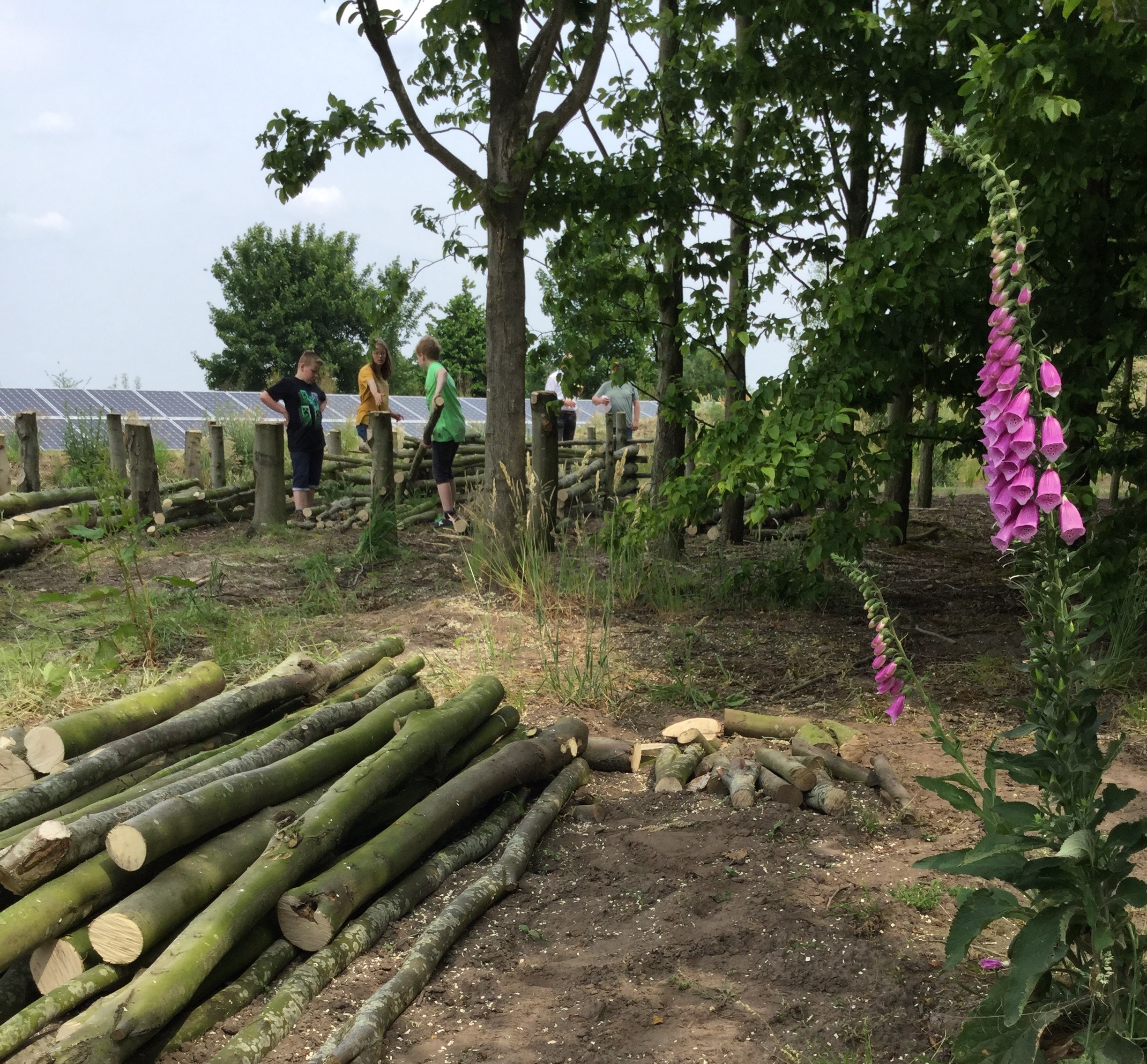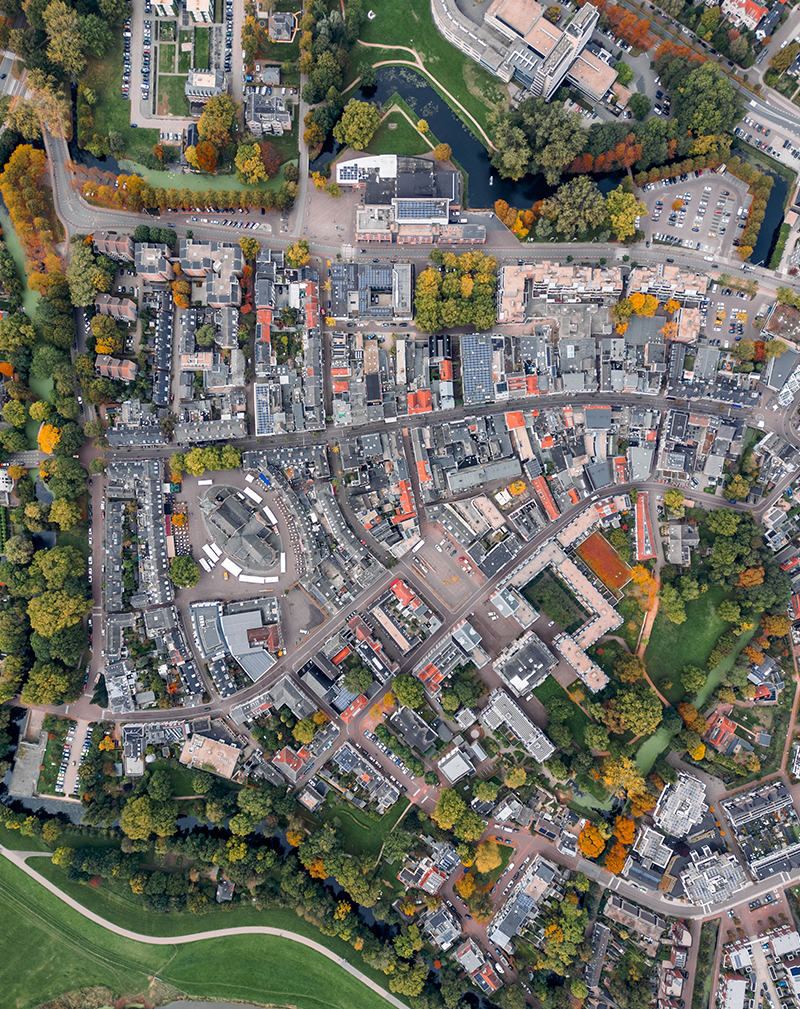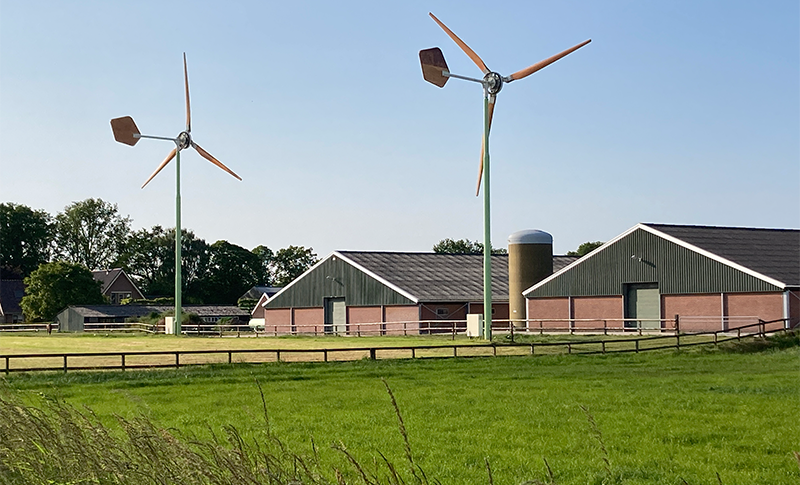That, in short, is the paradigm shift that Dirk Oudes would like to see for the role the landscape has in the energy transition. He obtained his PhD last week with a dissertation on the landscape as a catalyst in this transition.
The relationship between the landscape and the energy transition is not a bed of roses. When the energy regions revealed where they intend to achieve their 2030 reduction goals last year, heated debates arose throughout the Netherlands about suitable locations for wind turbines and solar parks. Oudes, a Landscape Architecture and Spatial Planning researcher followed the discussions closely. ‘Landscape and the energy transition are being placed at odds with each other. As if to say that we must do something about the energy transition but reluctantly because it ruins the landscape. That argument is incorrect, but it affects people’s perception of the energy transition.’
Backdrop
The same false dichotomy is used in discussions on the spatial aspects of the transition, says Oudes. ‘Landscape is seen mainly as a backdrop for energy projects. ‘The landscape is seen as a stable phenomenon that should change as little as possible’, he points out. As a result, landscape quality in projects is seen almost exclusively in terms of the (in)visibility of technical installations. While ‘the energy transition is too extensive to be hidden in the current landscape’, says Oudes. At the same time, few critical questions are asked about the current state of the landscape. ‘Worse, the current state is seen as the point of reference for all possible future changes.’
Profit and engineering
Oudes calls for a different approach, in which the landscape is considered a point of departure and a catalyst. He means the landscape in the broadest sense of the word: both the visible landscape and the meaning it is given, as well as the different functions it has. The latter includes food production, water storage, nature, culture and so forth. ‘This approach is still in its infant stages. Engineering, efficiency and profit maximisation have been leading principles in the energy transition so far. In all of Europe, there are only a few examples of solar parks that are not based on maximising profit but where an equal value is attributed to issues such as the environment, humans and nature’, he says. Oudes is convinced that these frontrunners, which he has described in detail in his PhD thesis, will make quite an impression still.
At some point, we will hit a wall if we shape the transition without considering the environment
The doctoral candidate is not opposed to some wind parks or solar parks with an industrial look. ‘In some locations, an excellent choice. But it is only one of many options. I want to show that there are plenty of alternatives. I feel that the location should determine the possibilities.’ A tailored approach. But this hits a sore spot for those in favour of speed. ‘Yes, the energy transition calls for urgent action. But we must also realise that at some point, we will hit a wall if we shape the transition without considering the environment’, Oudes underscores.
Integrated approach
And it can be done, Oudes knows. For his dissertation, he analysed several extensive projects with a critical landscape or spatial element, such as urban redevelopment or large waterworks such as Room for the River. ‘There, you see the added value of a strong administration determining that such an issue requires an integrated approach. With functional goals and based on the premise that the area should be improved in terms of social or spatial quality. Consider, for example, what other issues can be addressed at the same time: housing, leisure, and nitrogen reduction? At this point, the one cannot be done without the other.’
Better looking
Oudes acknowledges that an integrated approach requires much collaboration between a wide range of parties and that balancing all the different interests is far from easy. ‘A complex, technological process such as the energy transition rapidly becomes a question of kilowatts and terajoules. Including the concept of a landscape-inclusive energy transition in such dynamics is no easy feat. But an integrated approach yields a much better result.’
Continuing to refer to landscapes of days gone by is not realistic. Our living environment reflects our lifestyle.
The same applies to data and distribution centres, Oudes points out. These developments are also part of our current society and alter our living environment. ‘Continuing to refer to landscapes of days gone by is not realistic. Our living environment reflects our lifestyle. But let’s at least ensure we shape these changes as smartly as possible, to ensure the landscape becomes better than it was’, says Oudes. That also means taking into account possible new functions of the landscape because that enables people to become attached once again. ‘Include people in the change. Ask them what meaning the place has for them, and what they value. Don’t simply push the energy transition, but shape a new, joint narrative about the landscape.’
Crying shame
In his dissertation, Oudes details extensively what is required and what five basic principles apply. A book that he is editing with colleagues for policymakers, designers, developers and other energy professionals is scheduled to be published in the fall. ‘The energy transition is such a formidable task; let’s make sure we don’t look back in ten years regretting missed opportunities. It would be a crying shame if we were to look back on how we handled the transition with regret.’

 De Kwekerij in Hengelo (Gelderland) is one of the still few examples of a solar park that is not primarily about the engineering of maximum yield. Photo Marieke Enter
De Kwekerij in Hengelo (Gelderland) is one of the still few examples of a solar park that is not primarily about the engineering of maximum yield. Photo Marieke Enter 

